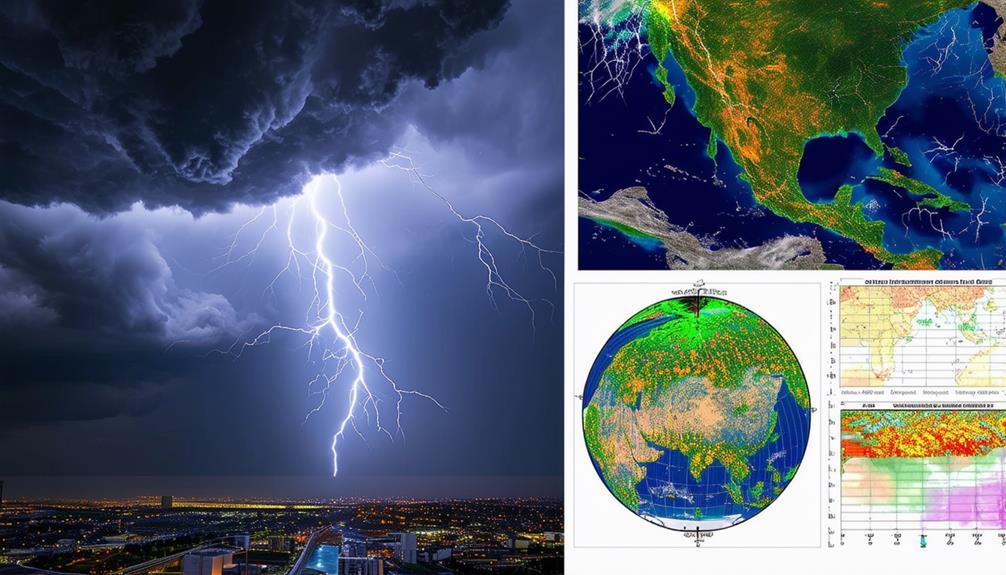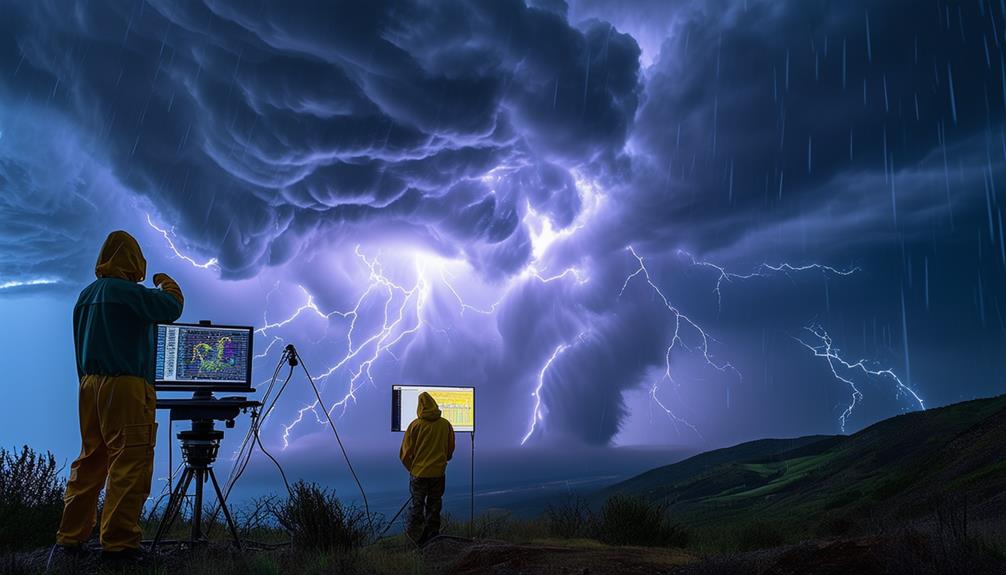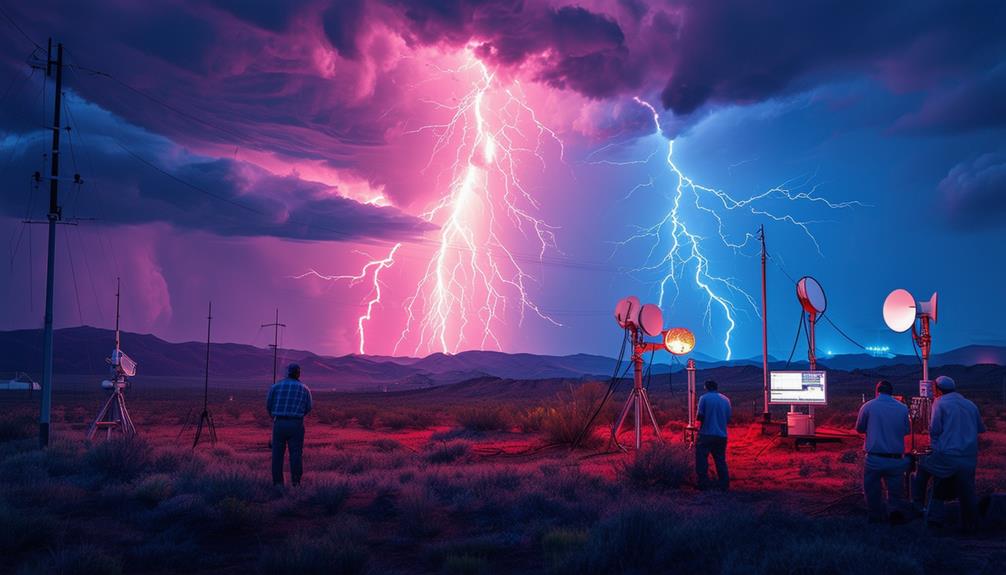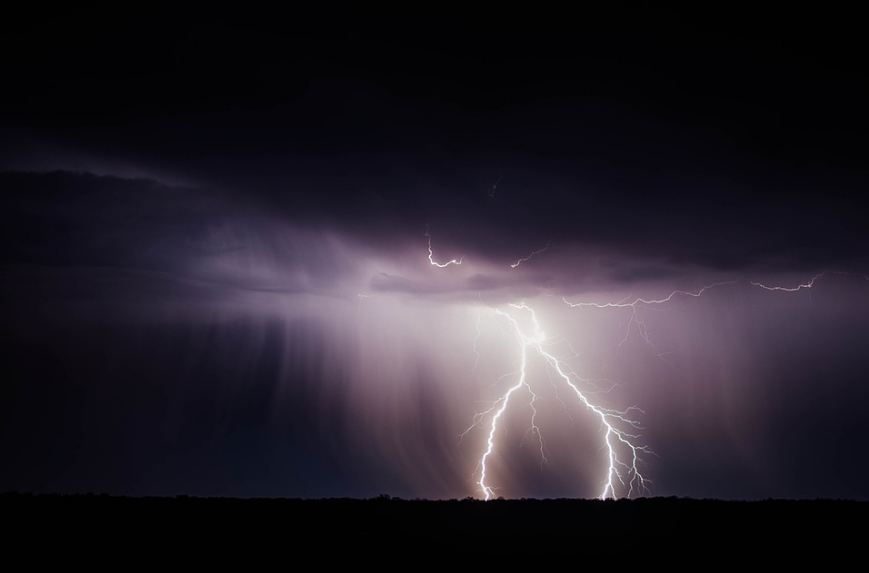How Lightning Is Used in Weather Forecasting and Climate Studies

While lightning may not be the first element that comes to mind in weather forecasting and climate research, it plays a crucial role. By analyzing lightning patterns, meteorologists can more accurately predict storm intensity and behavior. Advances in technology have made it possible to detect and interpret these electrical discharges, providing essential data for forecasting severe weather events like tornadoes.
Additionally, the frequency and distribution of lightning strikes offer valuable insights into climate change. But how is this data gathered and utilized to enhance our understanding of weather and climate? Let's delve into the details of this electrifying phenomenon.
Lightning Detection Technologies
In weather forecasting and climate studies, lightning detection technologies like the Geostationary Lightning Mapper (GLM) on GOES-R satellites are crucial for real-time monitoring of lightning activity. These advanced tools provide accurate lightning data essential for understanding weather patterns.
The Worldwide Lightning Location Network (WWLLN) collaborates globally to detect and locate lightning strikes using triangulation methods, enhancing our ability to pinpoint lightning events with high precision.
The Space Test Program-H5-Lightning Imaging Sensor (STP-H5 LIS) is another vital instrument that measures lightning data globally, supporting both weather forecasting and climate monitoring. By comparing lightning measurement data from different instruments, such as the Atmosphere-Space Interactions Monitor (ASIM) and sensors on the International Space Station (ISS), scientists can validate findings and enhance our understanding of global lightning distribution.
Lightning detection algorithms also play a significant role. They can identify specific lightning flashes containing terrestrial gamma-ray flashes (TGFs), providing insights into these high-energy phenomena.
Collectively, these technologies improve our ability to monitor and analyze lightning activity. This detailed lightning data is invaluable for immediate weather predictions and long-term climate studies, ensuring you can rely on it for more accurate and timely information.
Lightning in Weather Forecasting
Leveraging advanced lightning detection technologies can significantly enhance weather forecasting by providing precise data on storm intensity and behavior. Lightning data offers critical insights into storm dynamics, aiding in the accurate prediction of severe weather events like tornadoes. The integration of this data enhances both short-term and medium-range storm forecasts, allowing for precise identification of areas with intense convective activity.
Researchers and atmospheric scientists utilize lightning observations to improve forecasts of large storm events, leading to more accurate precipitation predictions. Machine learning models analyze lightning patterns, enabling more precise storm behavior predictions. This technological advancement revolutionizes weather forecasting, making it more reliable and timely.
Global lightning detection networks monitor lightning strikes worldwide, collaborating with scientists to study thunderstorm-related phenomena. This collaboration enhances convective storm predictions, ensuring the availability of the most precise and current information.
Storm Electrification Studies

Researchers conduct storm electrification studies to understand the complex processes behind lightning formation within thunderstorms. They examine how ice particles move and interact within the storm, leading to charge separation and the development of strong electric fields. This charge separation is essential for lightning formation, setting the stage for the electrical discharges observed as lightning.
Scientists often use instrumented balloons to gather data, measuring and recording various aspects of storm electricity. These balloons provide crucial insights into lightning behavior by sampling electric fields directly within the storm. Understanding storm electrification helps improve lightning prediction, thereby enhancing the accuracy of weather forecasts.
The knowledge from storm electrification studies is practical and actionable. Textbooks like 'The Electrical Nature of Storms,' authored by NSSL scientists, offer detailed explanations and findings on these phenomena. Collaborative projects with research partners further advance our understanding of storm electricity.
Field Research Initiatives
Field research initiatives are crucial for collecting real-time data on lightning and storm dynamics. By using instrumented balloons and advanced tools, these initiatives gather essential storm electricity data, aiding scientists in understanding and predicting lightning.
Key projects such as DC3 (Deep Convective Clouds and Chemistry) and TELEX (Thunderstorm Electrification and Lightning Experiment) delve deeply into storm electricity and lightning phenomena. These projects employ sophisticated equipment and lightning simulations, which are incorporated into weather models like the Weather Research and Forecasting (WRF) model.
This integration enhances the accuracy of storm behavior predictions and lightning forecasts. Collaborative efforts with other agencies aim to incorporate data from the Geostationary Lightning Mapper (GLM) into these models, further improving their reliability. Additionally, these initiatives often evaluate systems like the WSR-88D radar's lightning protection to ensure robust data collection.
Climate Impact Analysis

The increasing frequency of lightning due to climate change necessitates a comprehensive analysis of its impact on both weather patterns and public safety. As lightning occurrences become more common, especially in regions where they were previously rare, understanding these changes is crucial for assessing their environmental impact.
Robust monitoring systems are essential for effective hazard prediction. Advanced tools, such as NASA's GOES-R satellite, provide invaluable data that enhance weather forecasting and climate research. By analyzing this data, scientists can predict lightning activity and its potential dangers more accurately, thereby improving public safety measures.
Climate change not only increases lightning frequency but also complicates weather forecasting. The need for precise climate impact analysis grows with more frequent and unpredictable lightning events. Improved monitoring systems track these changes, supplying vital information to researchers and meteorologists.
A thorough understanding of lightning's role in an evolving climate is essential. By focusing on climate impact analysis and utilizing advanced monitoring technologies, we can adapt to these changes and mitigate risks, ensuring better preparedness for future weather events.
Conclusion
In weather forecasting and climate studies, lightning data is invaluable. By utilizing advanced detection technologies, meteorologists gain critical insights into storm patterns and intensities. Analyzing lightning activity helps in accurately forecasting severe weather events. Through storm electrification studies and field research, scientists can better understand storm behaviors and their impacts.
Studying lightning frequency and distribution also aids in climate impact analysis, enhancing preparedness for future climate-related events. Therefore, lightning should always be considered a pivotal tool in weather and climate research.




